Advertisement
Advertisement
It’s interesting to think that most people lose their off-road virginity on sand. It’s often the first place that you go to see if you actually like four-wheel driving. And it’s probably the single biggest reason why there aren’t four-billion four-wheel drivers out there! Why? Because sand driving for beginners is a baptism of fire.
Sand is the one place where if you get it wrong, you can get it badly wrong. Your car can float away with the tide (not kidding, mine did). You can roll your vehicle sideways on a dune (it has happened – repeatedly) or you can get stuck in quicksand (it’s not just reserved for kids’ books). So why do we do it? Because it’s fun, it takes you to awesome places, and there’s nothing quite like the feeling of cruising up a beach with your windows down and the wind in your hair.
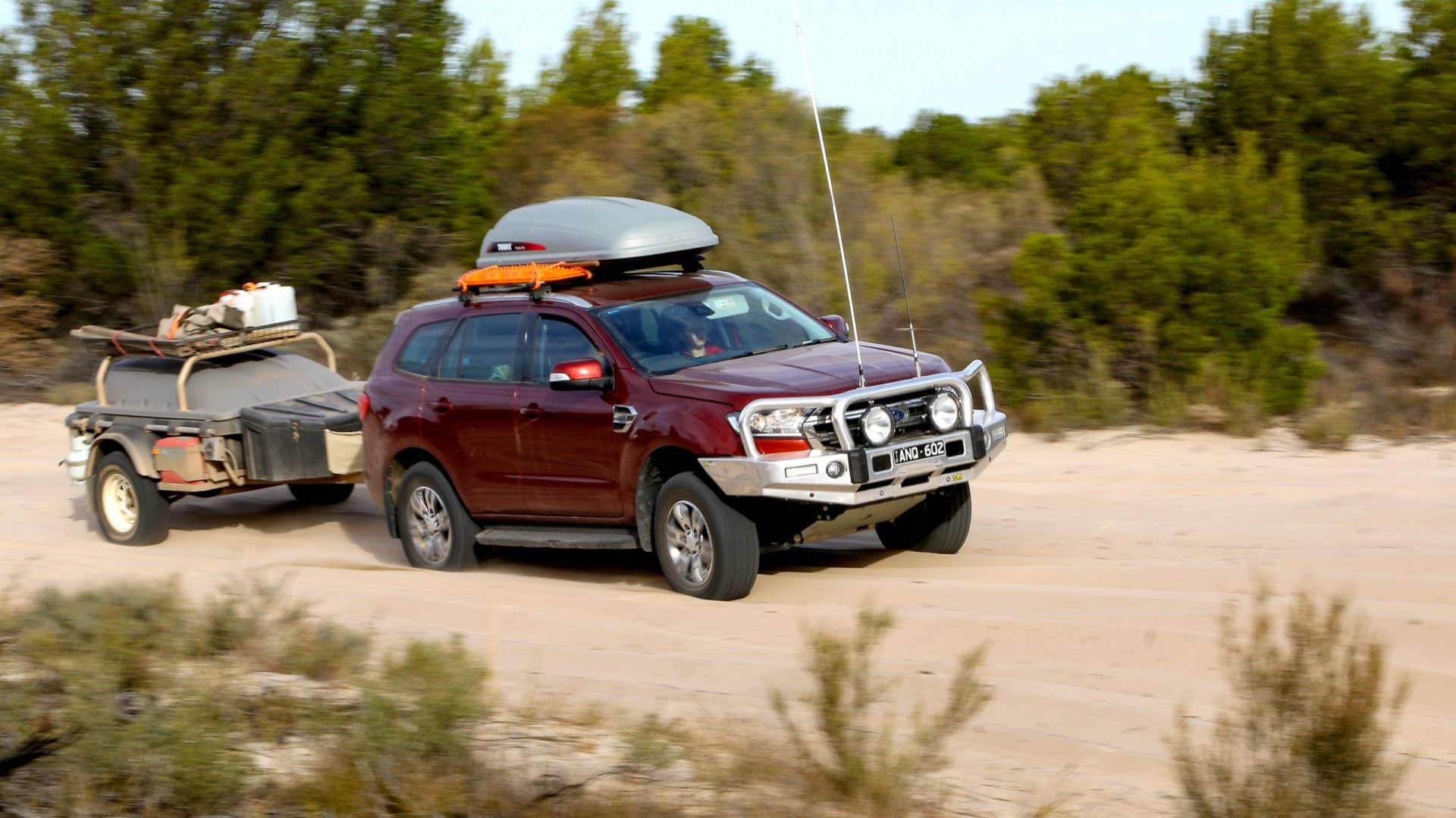
Unless you’re driving on wet sand after the run-out tide, or indeed after heavy rain, sand is soft. So when you plonk a two-tonne four-wheel drive on it, it has the tendency to want to sink. We stop that sinking or bogging sensation by lowering the tyre pressure. This increases the length of the tread pattern on your tyre, dispersing its weight over a larger area.
There’s a common misconception that if the tyres visibly ‘bag out’ in the sidewalls, you’ve lowered your pressures sufficiently. However, sidewall bagging is an unreliable indicator – the only reliable way of knowing is with a well-calibrated tyre pressure gauge.
The accepted normal tyre pressures on sand are 16 to 18psi. However, this can be altered by around 20% depending on how heavily (or lightly) your vehicle is laden. As with all rules, though, it’s made to be broken.
If you are badly bogged – or you have found some incredibly soft powdery sand – lower your tyre pressure until you get traction. I’d go as low as 8psi without beadlocks, or even down to 5psi with beadlocks (devices that ‘lock’ the tyre’s bead onto the rim). It’s important to note that whenever you lower your tyre pressure, your 4X4’s handling ability will be adversely affected. Hence, any cornering needs to be done with absolute caution, not only to keep your vehicle upright, but to keep your tyres on their rims.
I’ve lost count of how many tyres I’ve seen pop off their rims from sand-spraying magazine photo shoots…
And when the ground gets firm again, don’t forget to reinflate your tyres immediately. Low pressures and high speeds are a dangerous concoction, and can lead to tyre blowouts and vehicle rollovers.
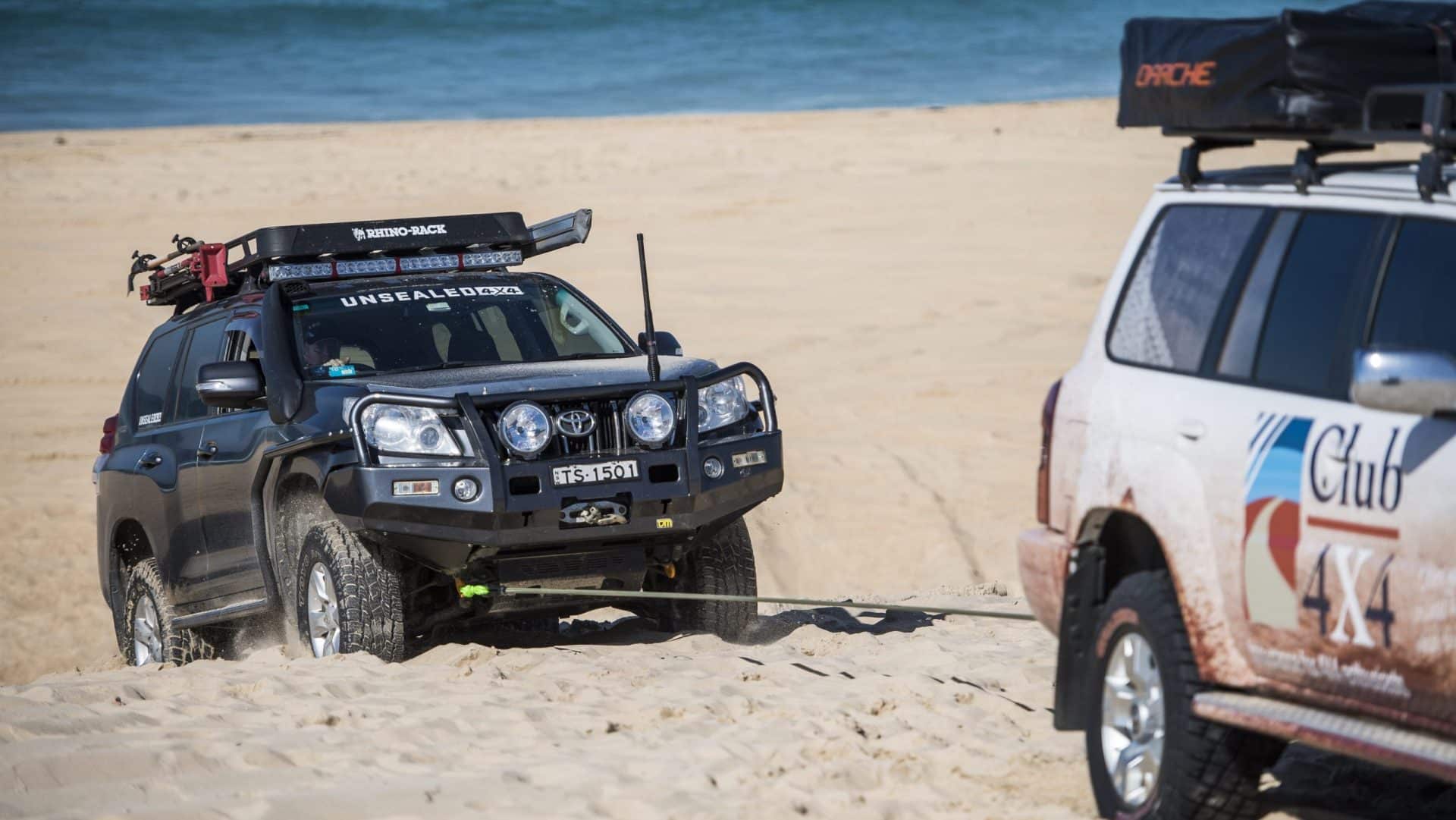
While correct tyre pressures are great, they’re not a cure-all for sand. For that you need a good driving technique. Sand naturally saps the power of your vehicle, and without power you can lose momentum and get bogged. So, the key is to keep your momentum up, and stop only when it’s safe to do so. It’s good practice to park on downhill slopes to give your 4X4 less of a chance of bogging.
Maintaining momentum is all about correct gear selection. With an automatic 4X4, this is as easy as pressing down on the accelerator, but for a manual it requires regular stirring of the gearbox, and a constant eye on your vehicle revs. Generally, you’ll want to maintain slightly higher revs to keep those wheels turning in a manual vehicle. You do this to ‘keep something in reserve’ for particularly soft patches of sand or quicksand.
Keeping the correct degree of momentum is always a challenge; however, most 4X4s do this by selecting low range. This gives you more adequate gearing and higher engine revolutions, meaning that power is ‘on tap’ more readily. If your 4X4 is particularly powerful, you might get away with high-range 4X4, but even then, only if the sand is reasonably firm.
There are no strict rules as to which gears to use, as all vehicles differ, and so too does the consistency of sand. You’ll soon work it out with practice, though. A lot of soft-roader 4X4s don’t have low-range 4X4, and can be driven on sand with some success – particularly the lighter, more powerful models. These vehicles usually have less ground clearance than their larger cousins. Be careful that you don’t rip off bash plates and mud guards in deep sand. Also, a lack of low range can place further pressure on clutches and transmissions, so take it easy if you’re in the soft-roader ranks.
Many beaches can get busy over the summer months, and with no lane markers, it can get a little tricky. This is especially the case at high tide, when some beaches get extremely skinny. Whenever oncoming traffic approaches, always indicate which side of the vehicle you wish to pass on. Of course, the basic rule in Australia is to stay on the left of the oncoming vehicle, but the use of indicators clears up any problems that might arise.
Some of the beaches you will drive on will seem perfectly flat and devoid of people, so the temptation is to drive at highway speeds of 100km/h or more. Yet these speeds don’t take into account the fact that you are not driving in a man-made environment. There may be fresh creeks cut across the sand, driftwood, or an unexpected jump-up, which could cause you all sorts of problems. So, stick to the speed limit, and if there isn’t one, drive at a speed that allows you to stop in a hurry (i.e. 40km/h).
The other problem with high speeds and beaches is when people are enjoying some time on the beach. Kids, for example, will naturally run straight from the water up to their beach towels without even looking, and if you’re hooting along the beach, there is no way you can stop in time.
On some beaches, the outgoing waves create undulations or dips in the sand, and often you’ll find people sunbaking here. Although very rare, at times these sunbakers have actually been run over by 4X4s that couldn’t see them in the dips until it was too late. Now, this is doomsdaying a little, but if it saves one life, then I’m a happy four-wheel driver.
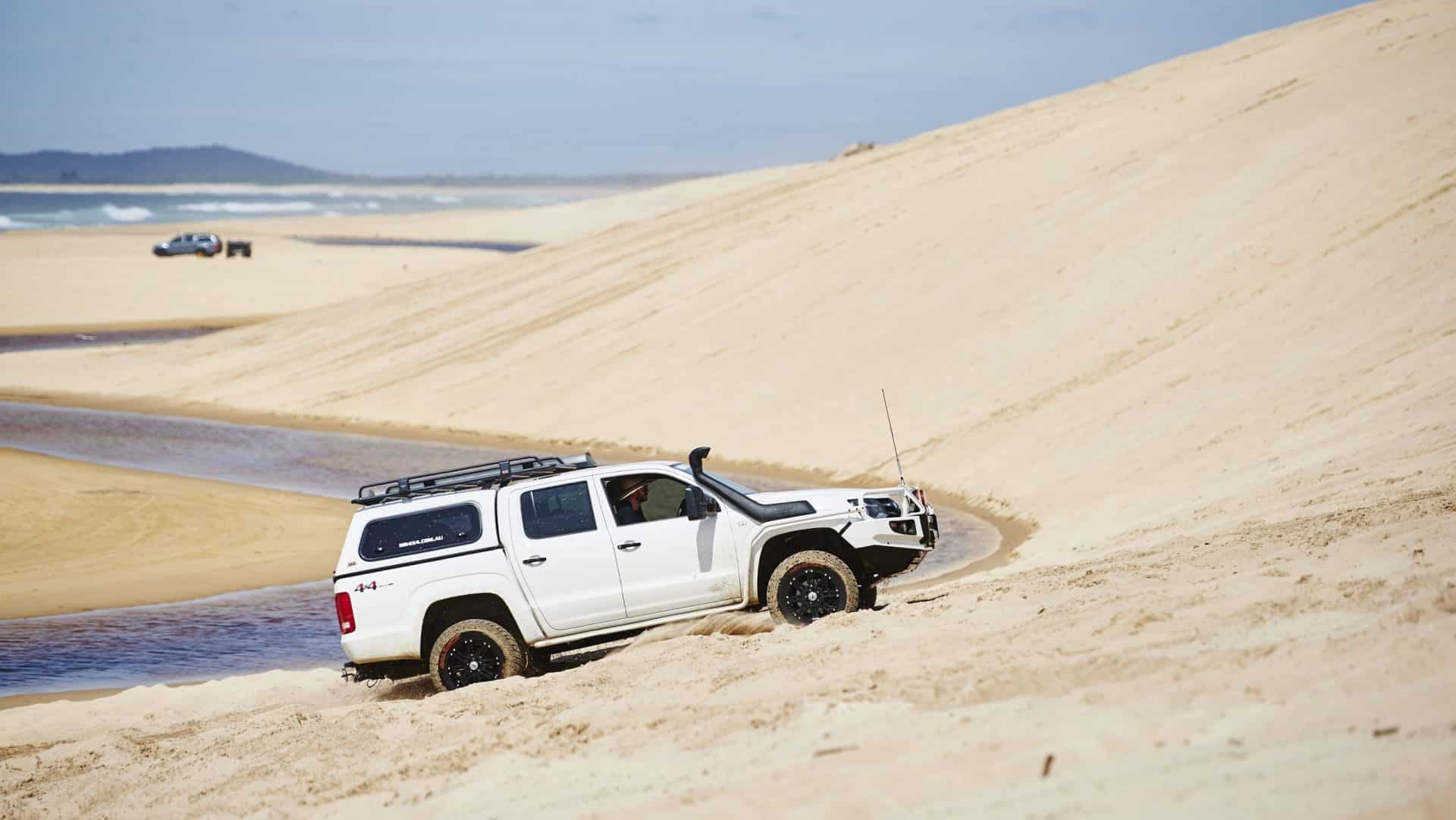
Sand dunes are always an exhilarating experience, whether they’re in the middle of the desert or on the coastline. Yet, they come with their own set of issues. Firstly, without momentum, you’ll rarely get up and over the top. Don’t be afraid to bury the slipper on your way up a steep dune.
Once you reach the peak, though, you’ll need to slow down or stop. Often, there will be a significant blind spot for a few seconds as you stare skywards, meaning you can’t see the terrain ahead, or approaching vehicles for that matter. This is why well-prepared vehicles always fit sand flags, making them instantly recognisable to oncoming vehicles.
However, pausing at the top of the dune is also important, because over the other side there may be a massive drop-off. Many a novice has gleefully powered to the top of a dune, only to sail straight ahead into thin air. At best, this will result in some airtime, at worst, death in a nasty end-over roll.
The other golden rule of sand dunes is to only ever head straight up or straight down. By their nature, 4X4s are top-heavy, and as sand is unstable, the wheels on the low-side lack support. The sand gives way, and the vehicle will roll down the dune. Hence, never turn on a sand dune or attempt to cross a side slope.
A final handy tip for white sand dunes is to wear sunglasses. This is not just to protect your eyes from dune glare, but to allow you better forward vision. You see, as there are no trees on dunes, there are very few, if any, shadows, so it can be difficult to pick holes or depressions in the sand. I find that sunglasses improve my chances of missing big and little lumps and bumps in the dunes.
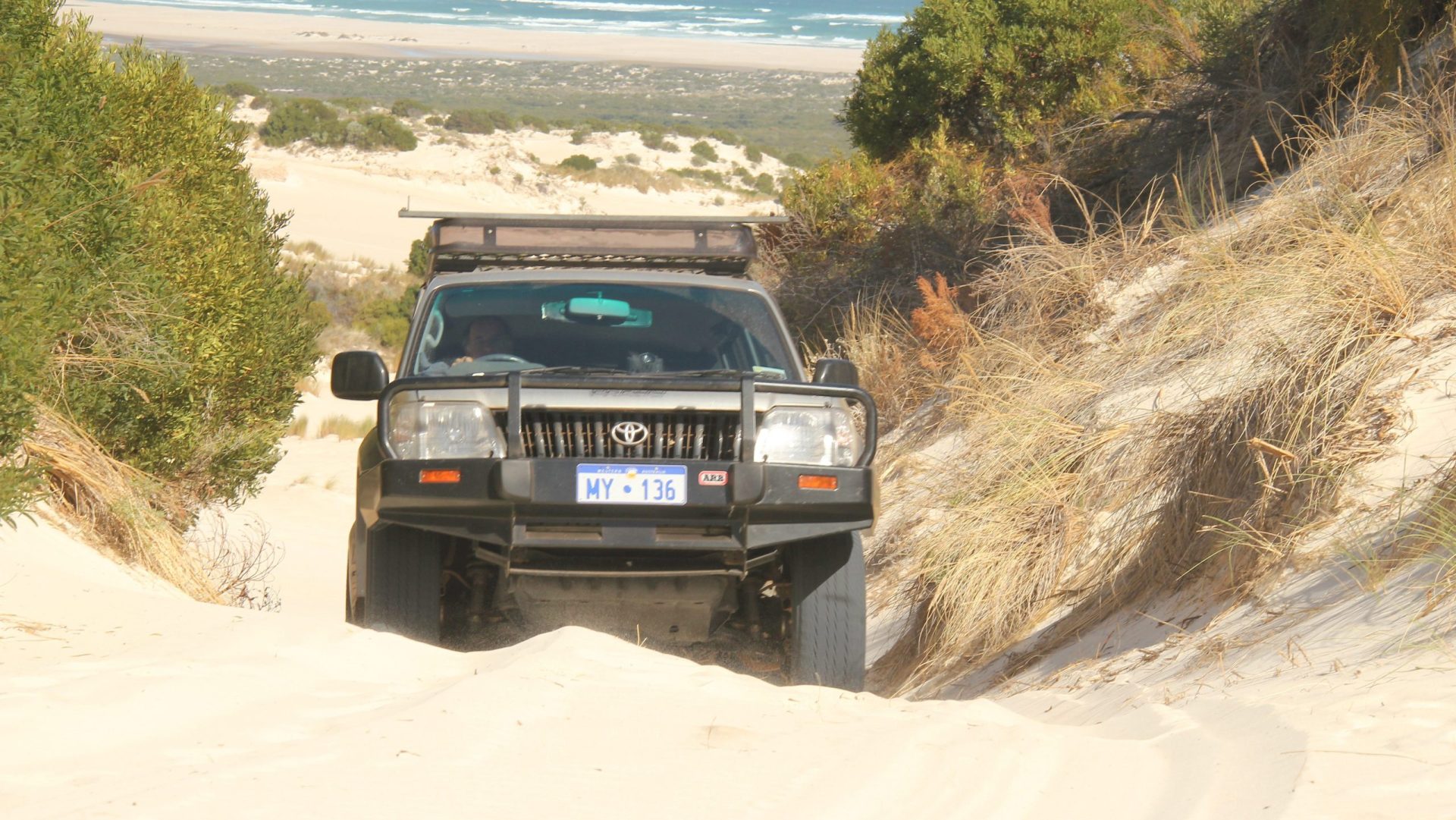
I’ve experienced quicksand both on the west coast of Tasmania and on Stockton Beach near Newcastle. It’s a peculiar phenomenon, whereby, usually through an underground aquifer, the sand mixes in roughly the same ratio as the water (50/50). The problem for the driver is that quicksand looks no different to normal dry sand. The weight of a 4X4 driving over the surface of the sand draws the water up, effectively mixing it to the quicksand consistency. This usually spells ‘instant deep bog’.
Experienced four-wheel drivers will avoid driving near areas of low-lying water, still water, or mini lakes, as this is usually where the quicksand occurs. If you can feel your vehicle sinking, accelerate rapidly and you may be able to drive out. Otherwise, if your momentum stops, so should you. Any further acceleration will simply bury you deeper.
Well, I hope I haven’t scared you out of sand driving. With a few precautions, it really is a blast.
Just don’t forget your tyre gauge.
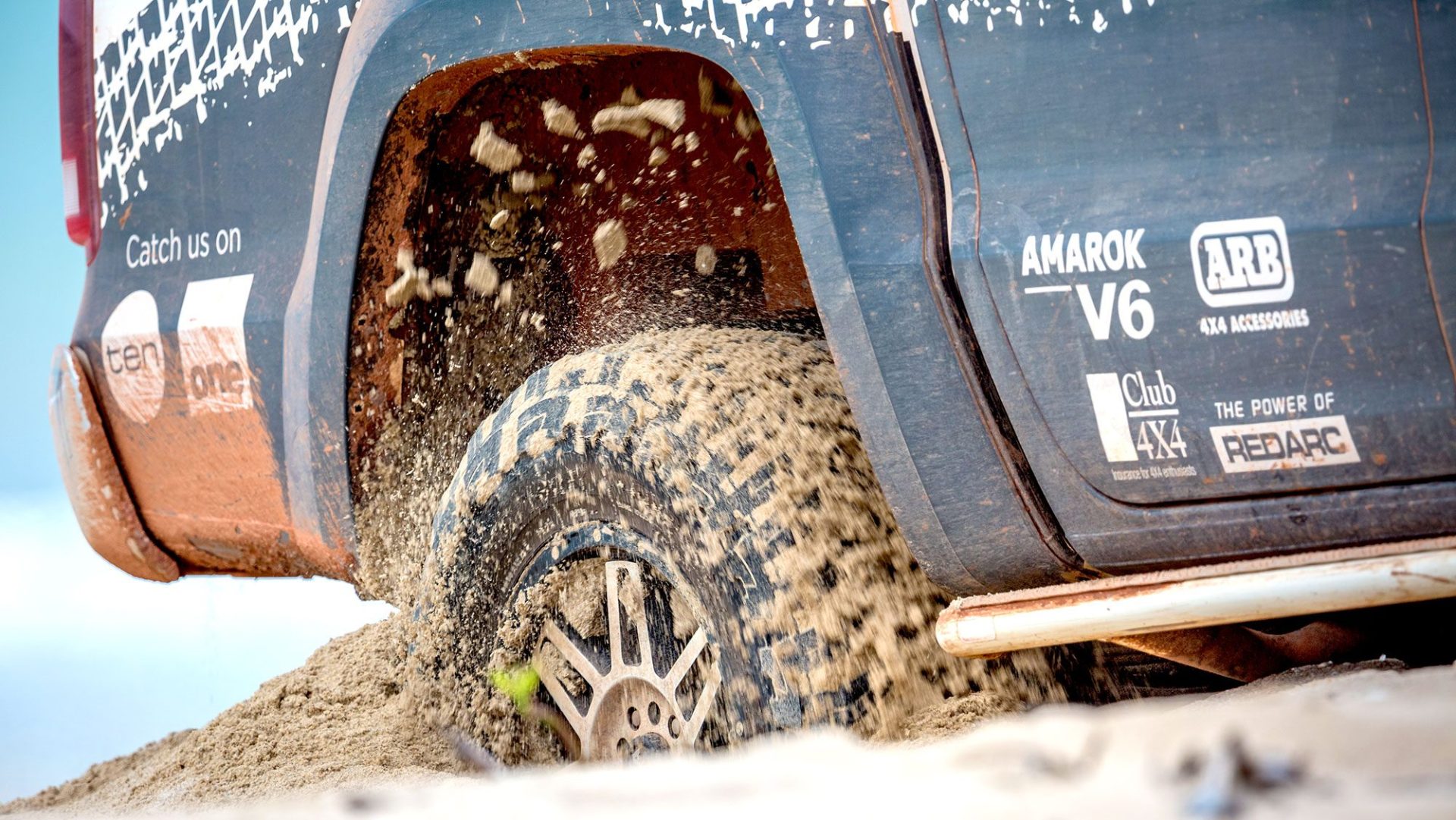
Minimise sharp turns
Stay off vegetated areas
Be gentle on your brakes
Don’t turn on dunes or
drive on side slopes
Pause at the top of sand dunes
Keep speeds down, but maintain momentum in soft sand
Drive above the high-tide mark, except for on a run-out tide
Use your indicators to show your intentions to oncoming vehicles
Re-inflate your tyres before getting back onto the bitumen
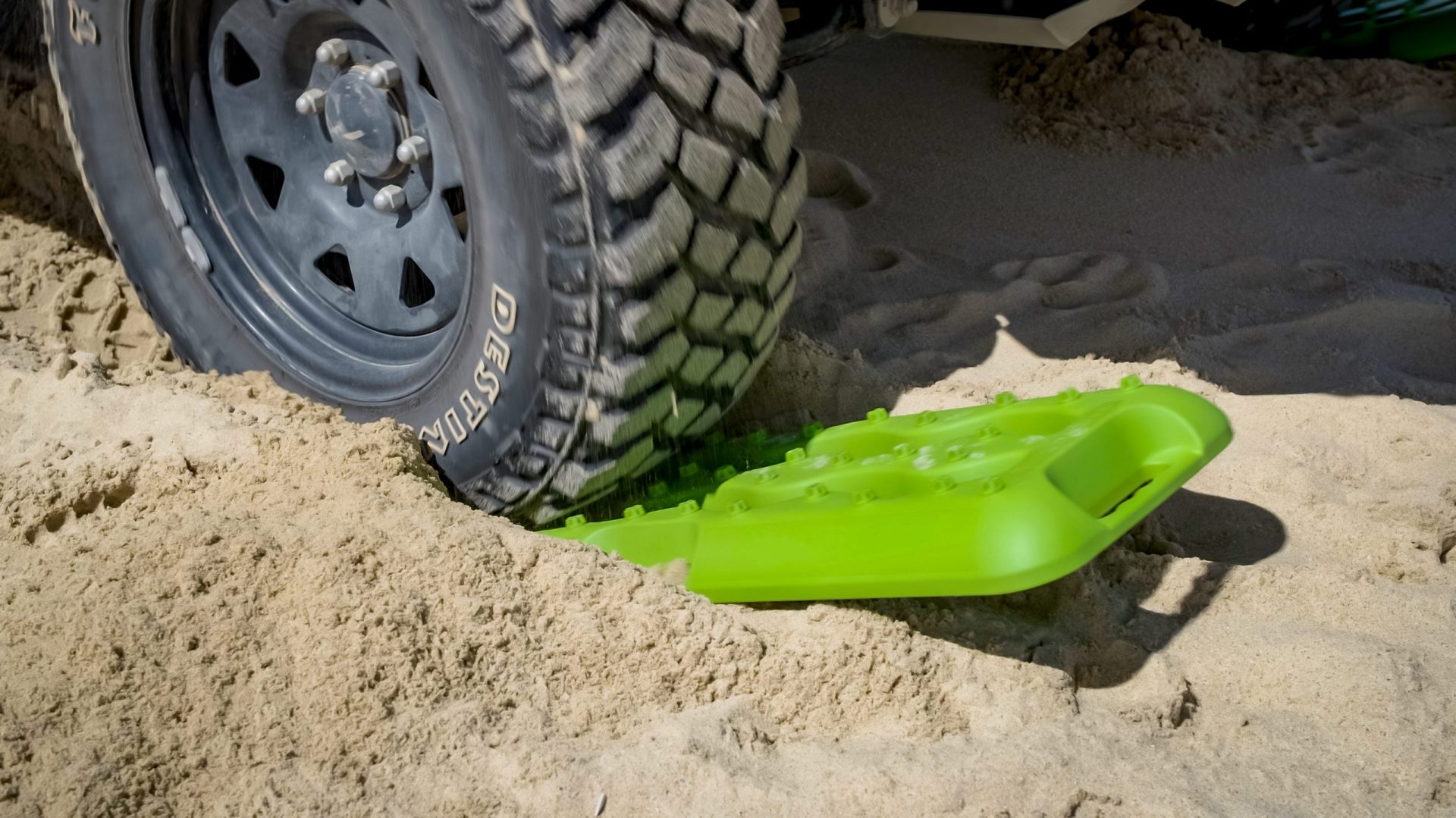
Parking your 4X4 under the high-tide mark. You go to take off, but get bogged. Up comes the tide, and sayonara fourbie!
Guessing tyre pressures – I’ve never met anyone who can accurately estimate tyre pressure by eye.
Not bringing a snatch strap. It’s bad form to borrow recovery gear when you should have thought ahead and brought it yourself.
Tyre gauge
Long-handled shovel
Snatch strap
Cable damper (x2)
Rated bow shackles
Air compressor
Jacking plate
Recovery boards like MAXTRAX
Tyre deflators like ARB E-Z Deflators
Unsealed 4×4 – How To Drive Mud
Unsealed 4×4 – How To Use A Snatch Strap
You don’t need maxtrax or tyre deflators. A pressure gauge lives in my car, there is a little compressor, and on the floor of the boot live 5 short planks and two lumps of wood to put the jack base on. I haven’t needed these in sand, but they have got me out of trouble in the hills. A little hand winch, water bottles, and a folding shovel complete the collection. Luggage goes on top.
Stockton is nice. Redhead is also good. My favourite tyre pressure is about 15 psi, but we tried 21 on Redhead the other day. The vehicle just moved but wouldn’t climb the big dune. We didn’t get bogged, but had to go forwards and backwards repeatedly to get rolling. I much prefer 15.
And I forgot – for any readers new to sand driving, this article contains solid good sense.
Good info!
Tires not tyres